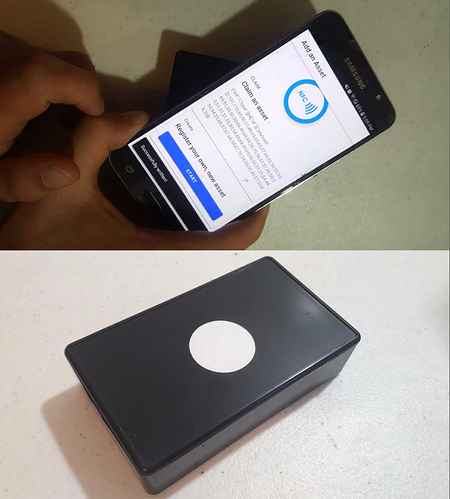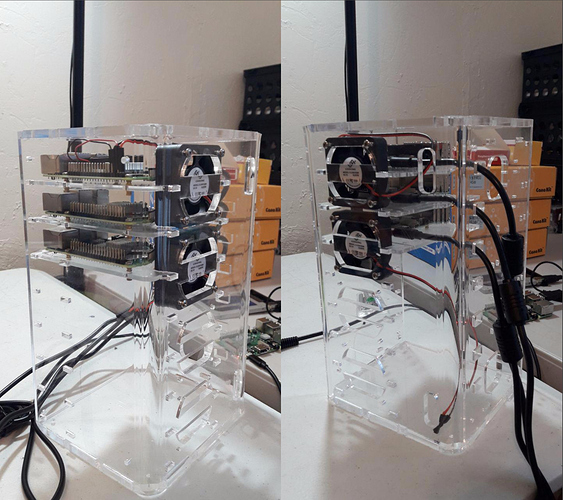NEM Ventures, the venture capital and investments arm of the NEM blockchain ecosystem, has announced its investment in IoDLT (Internet of Distributed Ledger Technologies), a B2B blockchain and IoT-based startup. IoDLT utilises IoT and NEM Catapult to provide scalable, cost-effective B2B solutions that automate approaches to securely recording sensor-based IoT data directly to an immutable, distributed, and trusted ledger.
David Mansell, Director and Co-founder of NEM Ventures, said:
“We see huge potential in IoDLT, and are thrilled to be investing in a startup with significant potential for scalability. Facilitated by NEM Catapult, IoT devices connected directly to the blockchain will have a wide array of industry applications. We’re excited to be at the intersection of blockchain and IoT, and to see first-hand the solutions that can be put in place to increase business efficiency and security.”
IoDLT’s core product is a small form IoT device which runs a NEM Catapult node (or entire private chain) to allow direct connection of various sensors and computing capability to a Catapult chain. This provides the full functionality of a blockchain solution at a fraction of the cost and can be used in a Private or Public chain scenario. Their solution will enable any business to utilize NEM Catapult’s features, including decentralized swaps between businesses, on-chain account systems, two-factor authentication, user data management, and secure business logic modeling.
With security and decentralisation at the forefront of its solutions, IoDLT has a strict no-central-server policy and all data is either stored privately, publicly on the blockchain, or in distributed storage, and is encrypted to ensure maximum data integrity. IoDLT’s solutions feature realistic implementations of the NEM blockchain and IoT that integrate seamlessly into already-established business operations, with tangible applications across the Artificial Intelligence (AI), healthcare, insurance, manufacturing and supply chain, agriculture, fintech, alternative energy metering, and accounting industries.
IoDLT plans to release a disruptive blockchain and IoT healthcare management solution within the next year, leveraging NEM Catapult to facilitate patient management, administration processes, decentralized records, Internet of Medical Things, and audibility. This solution will save time and cost processing while streamlining stakeholder relations, and will cater to doctors, patients, and health insurance companies. IoDLT currently has a pilot medical clinic in place to test this solution before its official launch in Q2 2020.
Bader Youssef, CTO of IoDLT, said:
“We strongly believe that businesses should respect their users’ data, and NEM Catapult makes this all possible. Its highly performant, secure, and modular nature allows us to have full flexibility with our solutions. Catapult allows us to focus more on providing high quality solutions, rather than worry about the safety and complexity of the technology. IoT devices benefit from this simplicity, as Catapult can interact with nearly any language and platform that supports the ability to make API calls and allows the devices to communicate securely. As a result, we can allow any business to utilize a fully secure and private blockchain and IoT solution, without the huge overhead costs.”
About NEM Ventures
NEM Ventures is the venture capital and investments arm of the NEM blockchain ecosystem. Specialising in high tech investments, NEM Ventures promotes the growth of the ecosystem through strategic investments in projects which align with the ethos of the NEM community. NEM Ventures was mandated by the community in a public vote to manage a pool of reserved funds to meet these aims.
NEM Ventures focuses on projects which demonstrate a truly differentiated product, the ability to generate positive net income in the medium term, and founders who showcase the desire to move the blockchain ecosystem forward. Founded in 2018, NEM Ventures is a relatively new member of the NEM ecosystem and comprises a small, highly motivated team of investment and technology professionals.
About IoDLT
Founded in 2018, IoDLT (Internet of Distributed Ledger Technology) utilizes two disruptive technologies - Internet of Things and blockchain - to provide seamless, secure, and scalable B2B solutions. IoDLT brings security to small and large businesses alike, without compromising user data privacy and user-to-business interactions. Their technology’s application spans a wide range of industries, namely healthcare, agriculture, supply chain, and energy metering.
Alongside providing business solutions, IoDLT envisions a future run by embedded devices. Securing those devices will become imperative to the operations of any business. IoDLT deploys proprietary and affordable IoT to blockchain protocols to secure the devices of the world.






